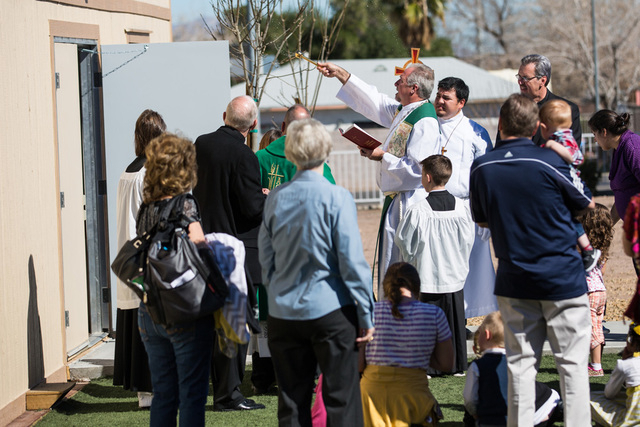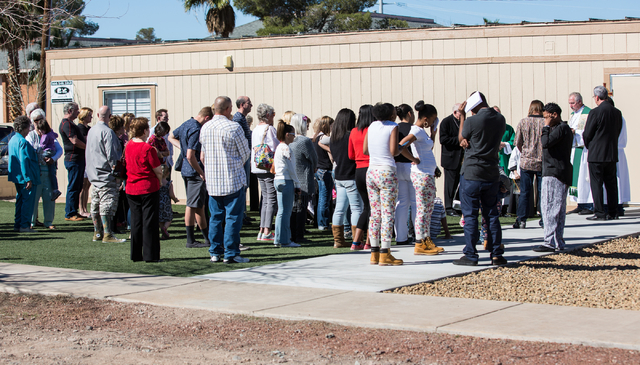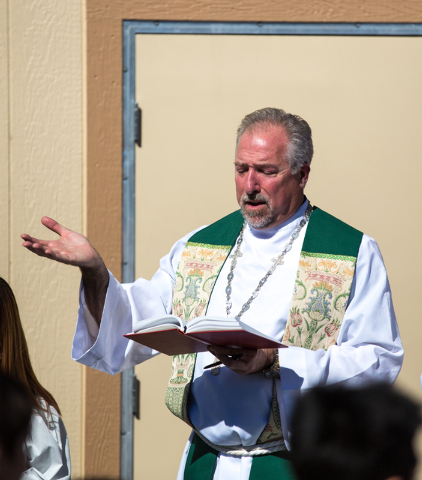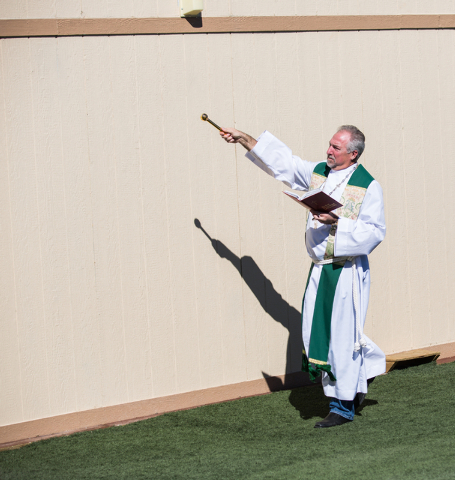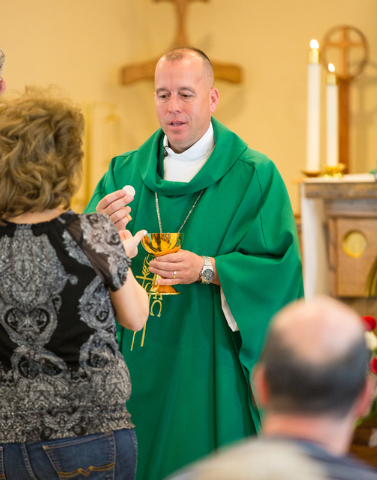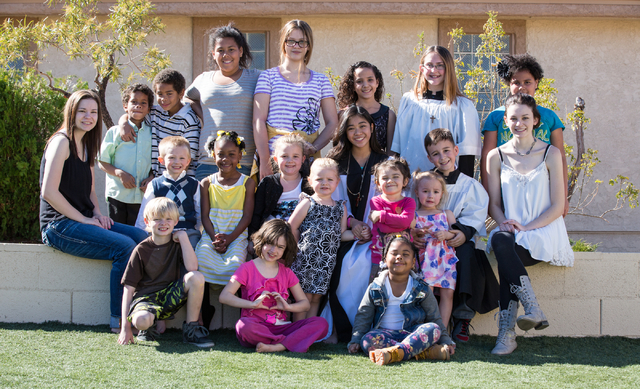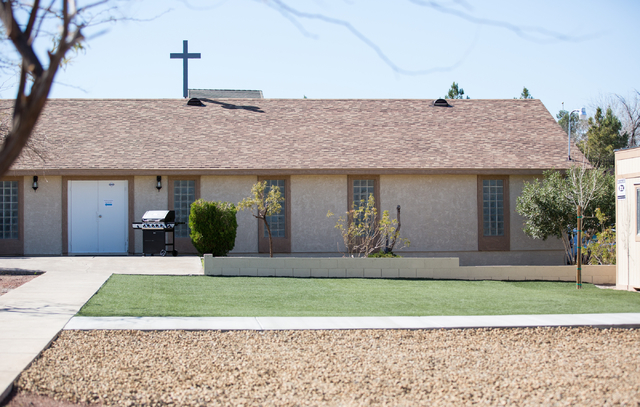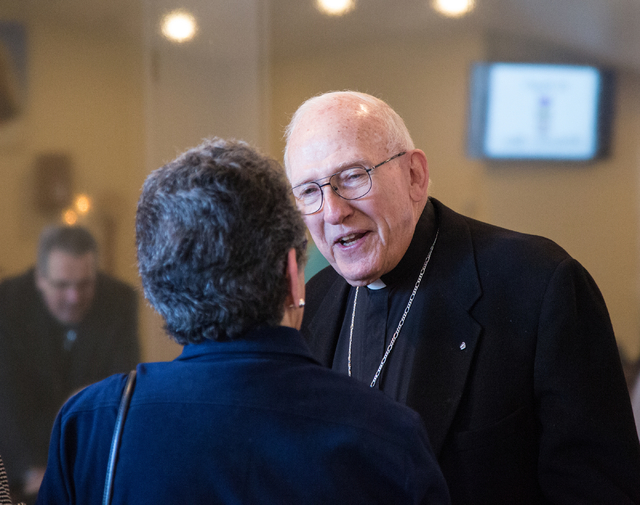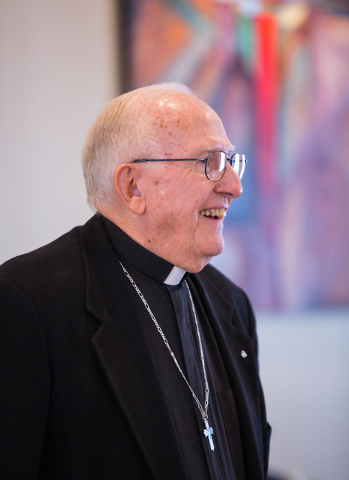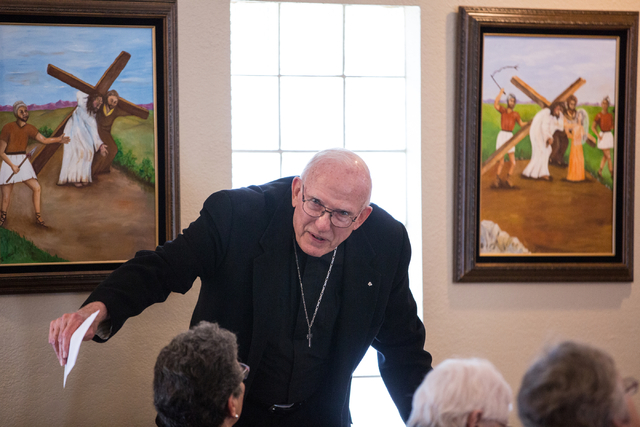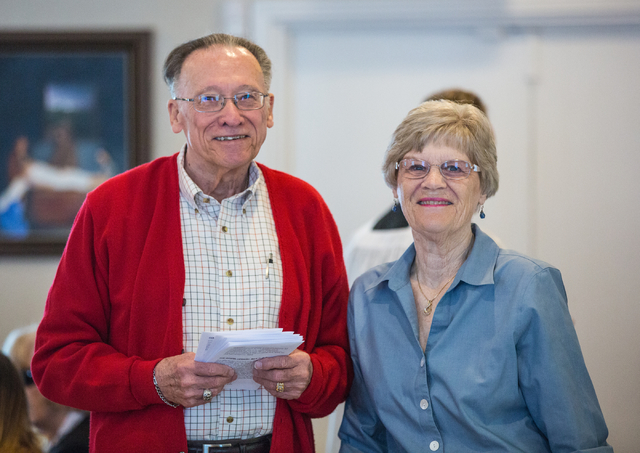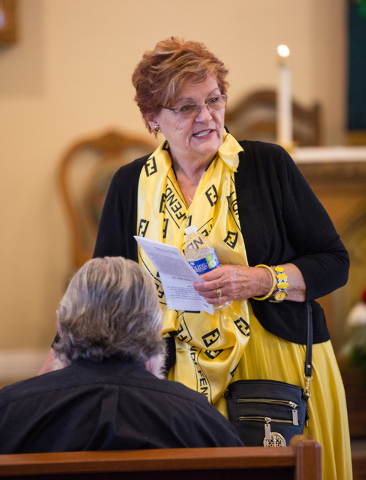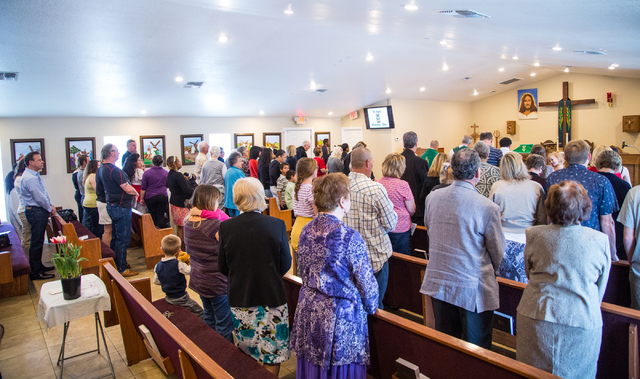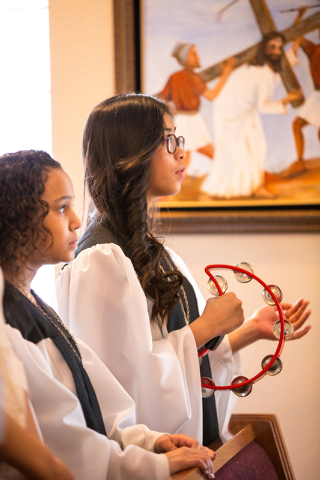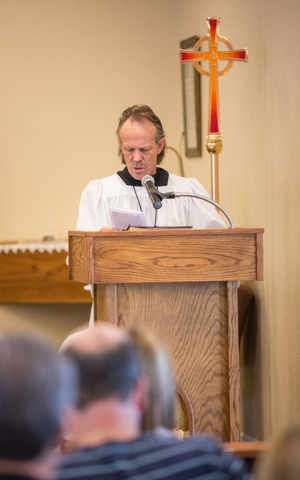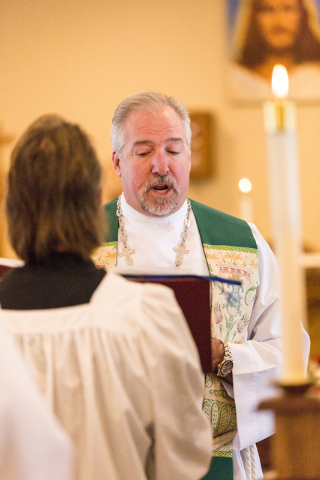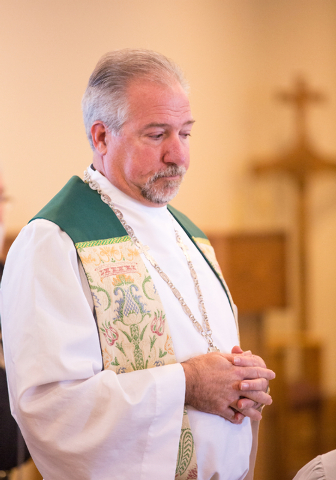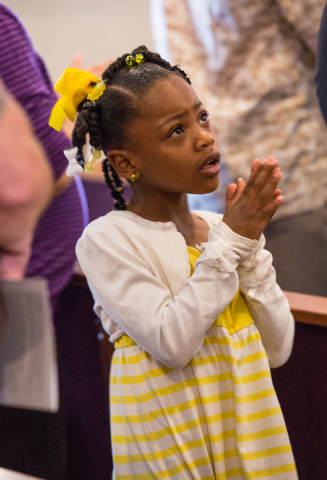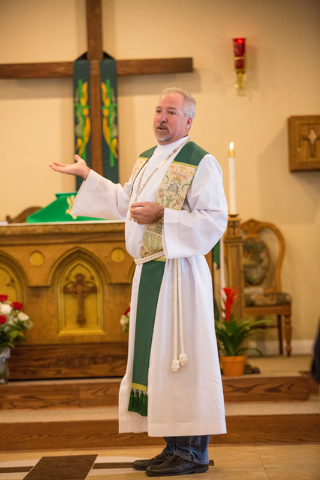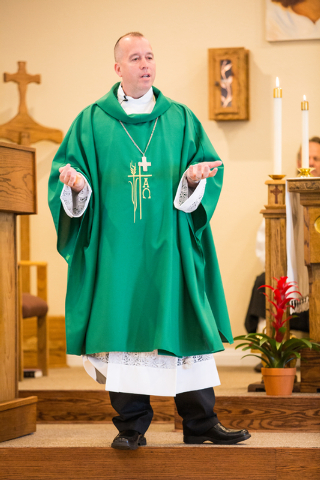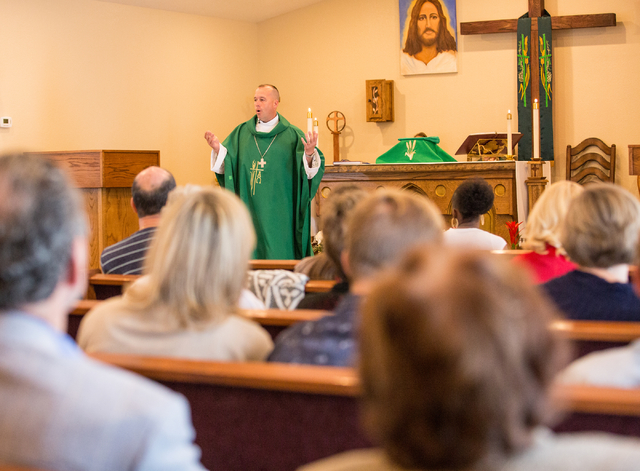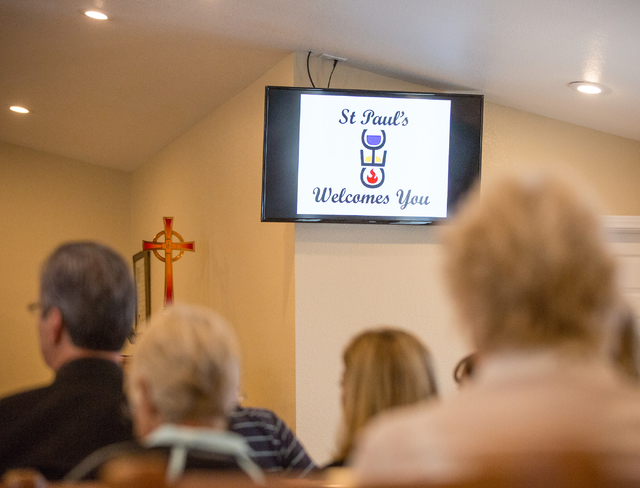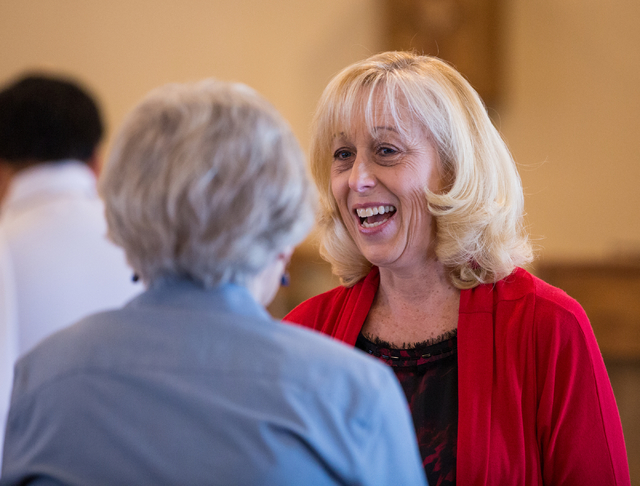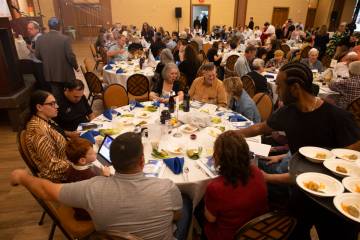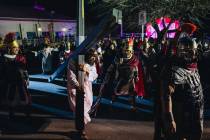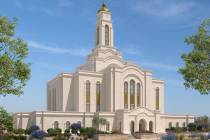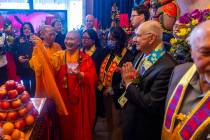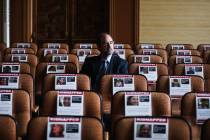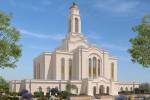Church finds new home, new mission
Measured against great biblical wanderings, their predicament can’t match Moses and the Israelites shuffling across the Sinai desert before moseying into the promised land.
They didn’t even wander the Nevada desert.
Still, the little church in Henderson veered close to homelessness before claiming its own promised land — via a very specific directive that arose not from a burning bush, but a backyard.
“I got on my knees in the yard and I said, ‘Lord, I don’t get it. There’s a space for lease or rent on every single corner, and yet nothing is happening,’ ” recalls the Rev. Chris Moran of St. Paul’s Charismatic Episcopal Church, which had been issued an eviction notice last fall from that other lord — a landlord. “And the Lord said, ‘I gave it to you, but you didn’t want it.’ In my interpretation, I gave God the finger and said, ‘Nope, this ain’t good enough.’ ”
Ask the Rev. David Hoff, rector emeritus, about the geographic adventure and you get equally colorful language.
“God put the fire underneath us. He said, ‘Listen, you meshuggahnas!’ ” Hoff chortles — invoking a Yiddish expression for, well, people off their nut — about church leadership eventually embracing “the dump” they initially spurned at 201 Taylor St.
As a Charismatic church — part of the International Communion of the Charismatic Episcopal Church movement established in 1992 — St. Paul’s describes itself as a convergence of charismatic (spiritual), evangelical (biblical) and liturgical (sacraments) prayer, “blending three streams into one river of worship.”
Yet for awhile it seemed their riverbed might go dry.
Founded in 1995, St. Paul’s initially held services in the bandbox-size theater of White Middle School in Henderson, then relocated in 1998 to a warehouse unit in the Henderson Industrial Park, gradually expanding to three units. Last September, the clock ran out when another church in the complex informed the landlord that if they couldn’t lease more space, they would find roomier digs elsewhere.
“The other church was growing faster than we were — so out the door,” Hoff says.
That meant that the smaller St. Paul’s would symbolically be — pardon the expression — thrown to the lions.
“We contacted the other church, because we couldn’t believe other Christians would allow this to happen,” Moran says. “They said, ‘We have to do what’s best for our congregation.’ ”
So commenced the wandering through rental and real estate listings. Whether for financial, logistical or aesthetic reasons, no land looked promising.
“There’s a church that’s been vacant for years out by Calico Ridge and we thought, ‘This is it,’ ” Moran says. “Then we found out that just to do the parking lot was $400,000. We would have had to take out loans for $2 million.”
Later, they were told of the Taylor Street lot owned by the Iglesia Ni Cristo Church, a Filipino congregation Moran says had moved to another location two years earlier.
“We visited it and I said, ‘Oh, this is crap. There is no freakin’ way.’ The inside was dated about 50 years. Stuff was coming out of the floors. You could tell there had been pews in there, but it was just horrendous.”
Cue the backyard prayer chat, followed by a phone call from a leader of the Iglesia Ni Cristo Church.
“He called me a week later, after I heard from the Lord,” Moran remembers. “He said, ‘Chris, I thought you were awesome, and God tells me we need to sell you this place. You’re supposed to have this.’ They offered it to us for $450,000, which is a huge deal, since just the land is worth $750,000.”
After investing another $148,000 to gut and refurbish the property, the modestly growing congregation — it has expanded from an average of 46 congregants per Sunday service last fall to 74 in February — set up shop in late November but saved its “grand opening” for mid-February. By owning rather than renting — and having purchased the new church outright, without taking out loans — the church can pocket the $3,600 it was forking over monthly at the industrial park.
“Now we can use it to serve and affect the community,” Moran says.
Beyond finances, however, the move has shored up the church’s mission.
“We had ceased being a church and had become a club for awhile,” Moran says. “We had gotten so complacent that we were serving ourselves. We were a Sunday church. We came on Sundays, we worshipped the Lord, and then the biggest question was, ‘Where are we going to go for lunch?’ It wasn’t the landlord who kicked us out. God was saying, ‘You guys are too comfortable. I have to ruffle your feathers.’ Otherwise, we’d still be there going to lunch with ourselves.”
Practicing what it considers a more spiritual form of prayer as part of the Charismatic movement, St. Paul’s offers more animated services than most. On a recent Sunday, parishioners swayed in place, arms waving to the rhythms of the hymns. Tissue boxes were wedged into the pews by the aisles for those overcome with prayerful emotion. In the back of the church, a four-piece live band, or “prayer ensemble,” accompanied the joyful singing.
“I fell in love with the music and the freedom it brought. It really is more fun,” says music director Chris Boardman. “There is a dichotomy in the freedom of worship in the Charismatic and the standard format of the Episcopal church. This is a combination, the best of both.”
Raised in New York as a Roman Catholic, Moran also cites the music as a bonus, compared to the pipe organ and choir with which he was raised.
“That’s so boring. I love our music much better,” Moran says. “And Roman Catholicism was always about money; they need this and that. That’s not who we are. God will provide.”
Preaching at a recent service, Moran stepped down off the pulpit and spoke directly to congregants, an eye-to-eye approach he prefers.
“The pulpit was built so you’re above people, but the only difference between you and me is that I went to school longer,” Moran says.
During his sermon, Moran — making the “we’re all sinners” point — told worshippers that whatever sins they have committed or even considered committing, he has committed worse.
So welcoming is the atmosphere that 20-year-old Cassie Anderson, who performed an acolyte’s duties at the service, found it her entryway into religious faith.
“My mom passed away, and we knew we had to be connected to a church, and it was really inviting here,” Anderson says. “I used to go to church once a year, on Christmas Eve. Now I go every Sunday. I’ll never stop going to church now. I didn’t know about God until I started coming here. This is like my home.”
Now they’ve wandered into a new one — on a little patch of Henderson promised land.



